Mind Control: Gallery of Zombie Ants
Zombie ants
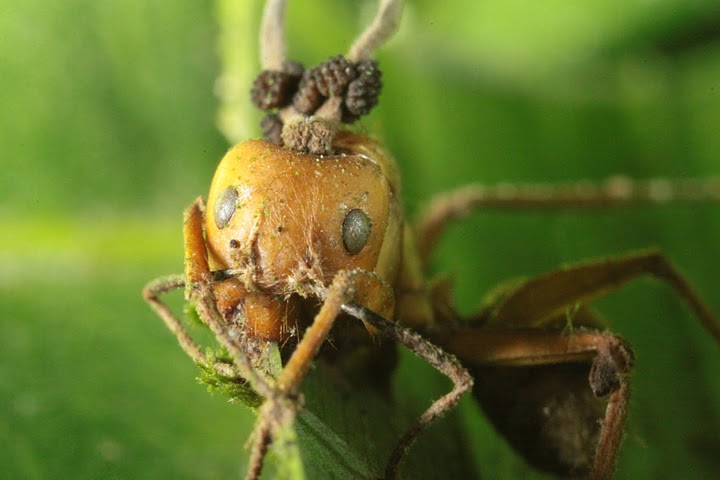
In two sites in the Brazilian rain forest, researchers identified four new species of brain-controlling fungal parasites. These fungi infect carpenter ants and turn them into zombies, directing them to leave their colonies and die in places where the fungi can grow and spread. The zombifying fungus can be seen growing from the top of this dead ant's head.
Chemical warfare
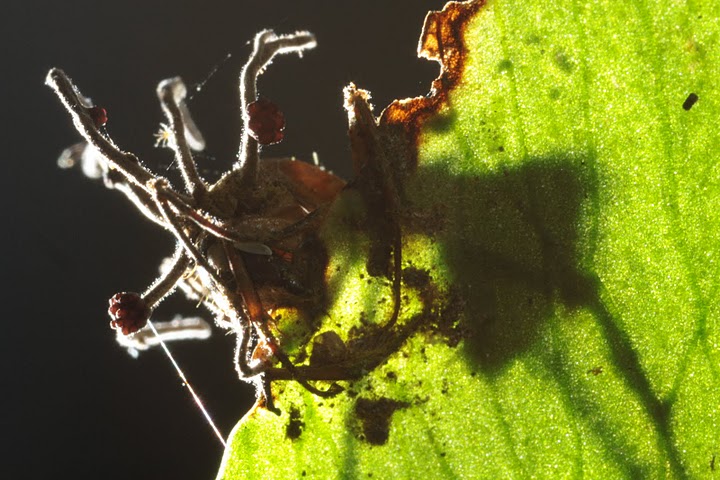
The fungus takes control of the ant using chemicals that have not yet been identified, according to one of the researchers, David Hughes. It directs the ant to leave its colony and clamp down a leaf before the fungus kills it. Here one of the newly described species grows from a dead ant whose body is silhouetted against the leaf it bit before dying.
Scary scene
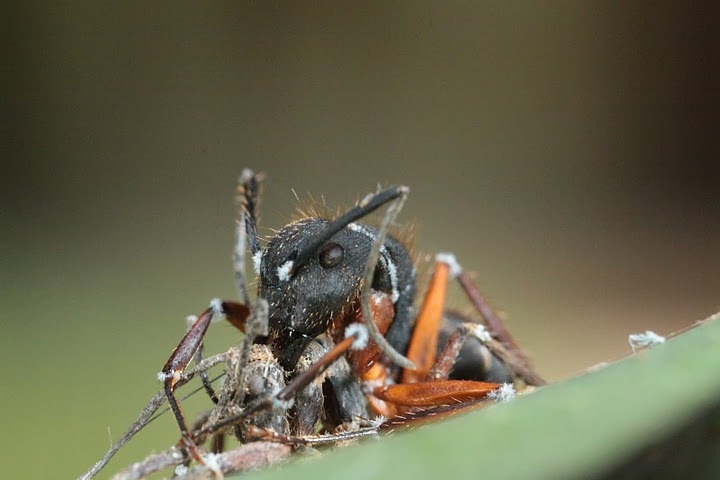
In a scene worthy of a horror movie, one zombie ant bites the neck of another, already dead, zombie ant.
Exploding head
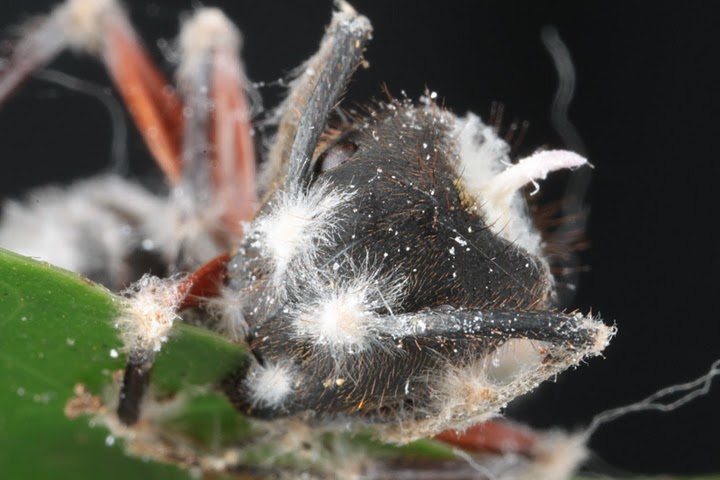
After the fungus kills the ant, profuse fungal growth erupts from the dead ant's skin, or cuticle, as shown here.
zombi ant fungus
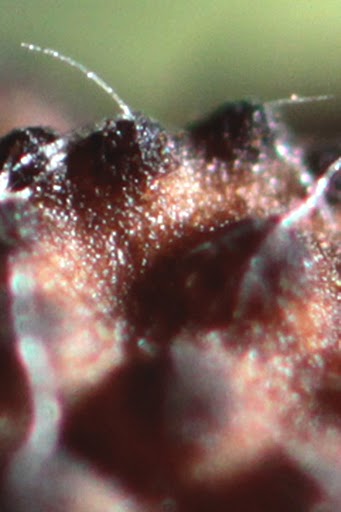
A close-up of the fungus's ascoma, the ball-like structure on the stalk from which spores emerge.
Parasitic fungi spores
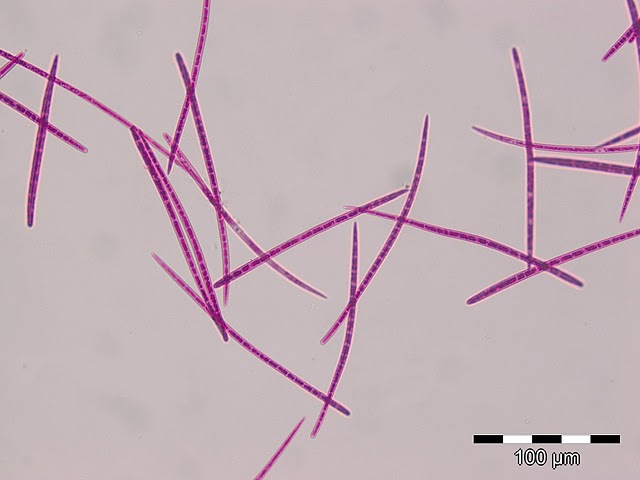
The long spores of one of the new fungi species, Ophiocordyceps camponoti-balzani, named after the ant it infects.
Drying out
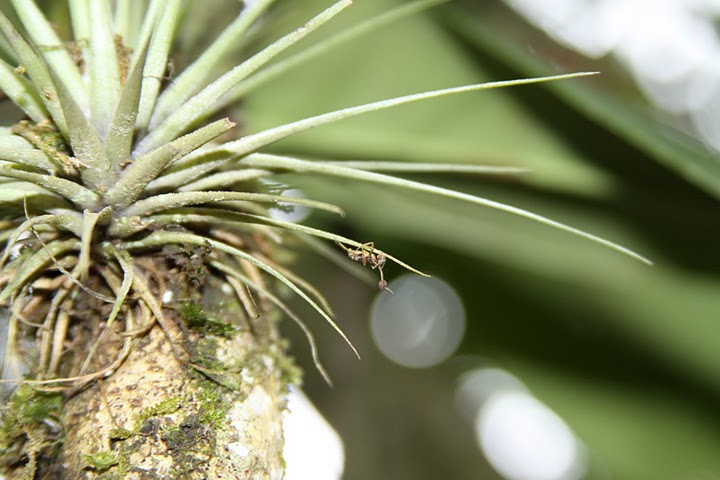
The researchers observed that one of the study sites has become significantly hotter and drier, a change they attribute to global warming. This may be good news to the ants, which are more able adapt to the change, but not the fungus. The researchers worry that the change may lead to the extinction of newly discovered species.
Get the world’s most fascinating discoveries delivered straight to your inbox.
How zombie ants lose their minds

Scientists following seemingly drunk zombie ants, infected with a fungus in the species of Ophiocordyceps, found the fungi fill the ant's head with fungal cells and change the ant's muscles so the ant can grab a leaf in a death grip just when and where the fungus wants it. Here, a zombie ant carcass clings to a vein on the underside of a leaf, just as its mind-controlling fungus intended. [Read more about the study.]
Fungus to the Rescue
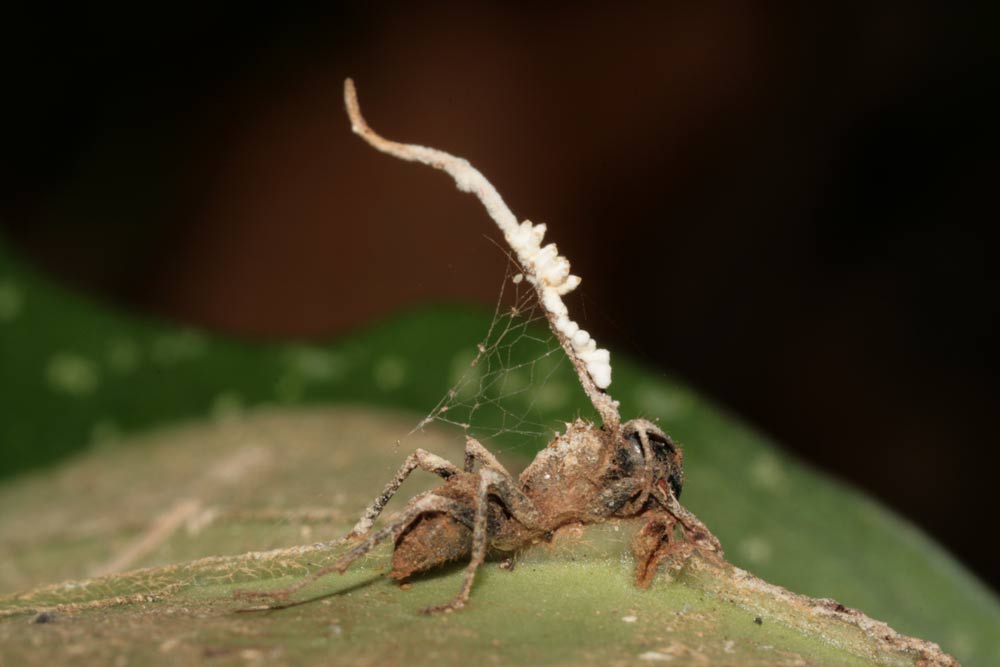
The zombie ant has a helper — a hyperparasite fungus. Shown here, a zombie ant with the brain-manipulating fungus (Ophiocordyceps unilateralis) having been castrated by the hyperparasite fungus (white with yellow material).
Zombie Spores
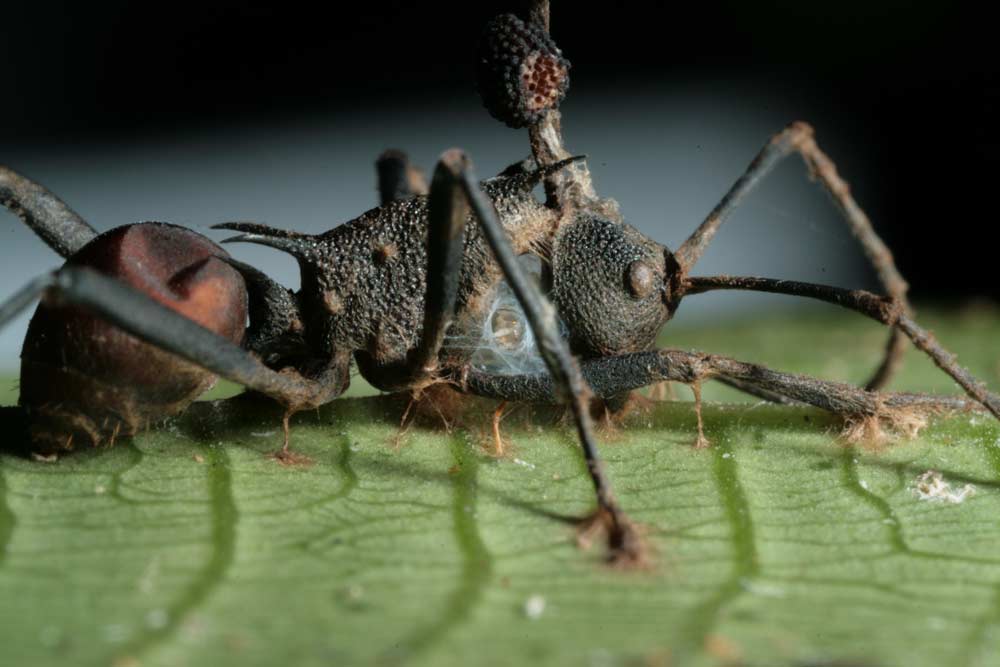
The mature, fruiting body of a zombie fungus is growing through this zombie ant's neck. The poor ant also has damage from a chewing insect; and a spider is making a home beneath its corpse.



